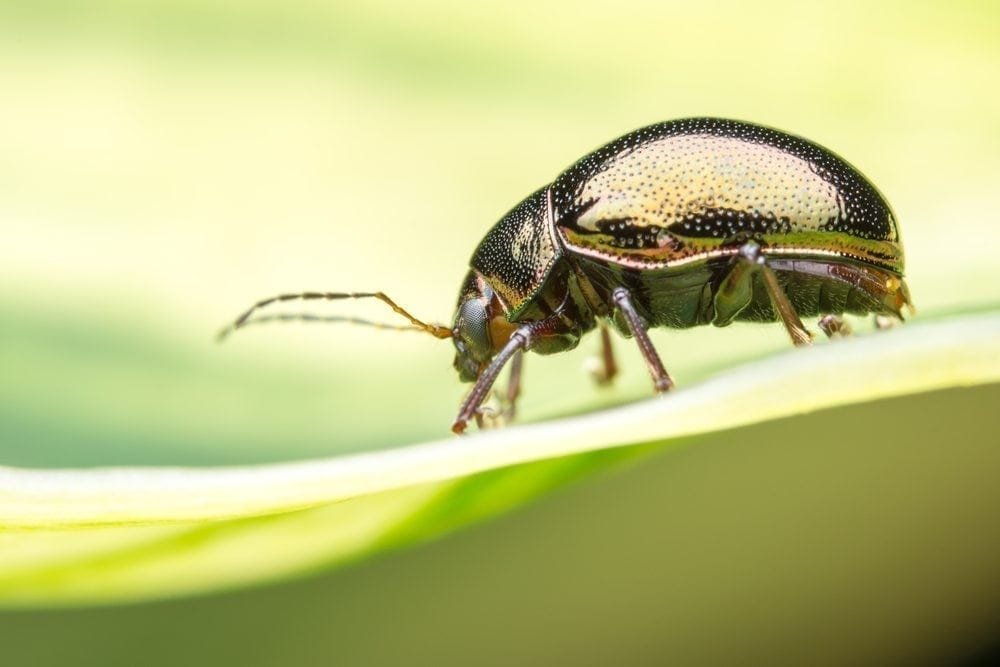Tansy beetle
The rare and visually stunning iridescent green tansy beetle (Chrysolina graminis) was once widespread in Britain’s wetland areas, but it is currently critically endangered – not just in the UK but across its worldwide range.
It is now a conservation priority species in England, which means that public bodies have a duty to protect it and its habitat. It was believed to have one last remaining stronghold in the UK on a 30km stretch of the banks of the river Ouse in York, mainly eating tansy (Tanacetum vulgare), a perennial herb which has given the beetle its name. At their York site they complete their entire life cycle on and around the plant, beside riverbanks or in wetlands.
The site (Clifton Ings and Rawcliffe Meadows) was confirmed as a Site of Special Scientific Interest in May last year, and work is underway to improve its habitat and control the increase of invasive species such as Himalayan balsam which has resulted in a decline in tansy plants over the past few decades.
Recently another population of tansy beetle was discovered in in the East Anglian fens in July 2014 after a 40-year absence. The discovery at Woodwalton Fen National Nature Reserve (NNR) was significant as it demonstrates the resilience of the species when given the right conditions.
Natural England has been working closely with partners on the Great Fen vision to create new habitat around the NNR, and with the Tansy Beetle Action Group (TBAG) to study how best to improve conditions for the beetle. Work underway also includes a recent re-introduction at Wicken Fen.
Hazel pot beetle
Pot beetles are a fascinating group of petal and leaf-eating beetles that get their name from the protective shell-like ‘pot’ that the larvae live in, created using their own droppings.
A hazel pot beetle colony was found in Sherwood Forest in 2008 – it was the first time the insect had been recorded in Sherwood Forest for 70 years. Management techniques underway include the nurturing of young birch as a food source.
Stoneflies
Stoneflies, or Plecoptera – from the Greek ‘pleated wing’ – are an ancient group of insects, dating from 250 million years ago, with 2,500 known species worldwide.
Unsung inhabitants of the freshwater world, their larvae can grow to over 30mm in length, making them among the largest invertebrates found in fresh water. Due to their high oxygen requirements, the larvae are particularly sensitive to organic pollution.
The Invertebrate Conservation Trust is actively working to save Britain’s rarest bugs, bees, butterflies, ants, worms, beetles and many more fascinating invertebrates. Further information is available on Buglife’s website.
 Play Video about This Rock Might Just Save The World
Play Video about This Rock Might Just Save The World Play Video about Play 2 hours of rock
Play Video about Play 2 hours of rock Play Video about Play 2 hours of brook
Play Video about Play 2 hours of brook Play Video about Play 2 hours of sheep
Play Video about Play 2 hours of sheep











































